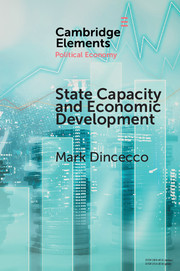Element contents
State Capacity and Economic Development
Published online by Cambridge University Press: 07 October 2017
Summary
Keywords
Information
- Type
- Element
- Information
- Series: Elements in Political EconomyOnline ISBN: 9781108539913Publisher: Cambridge University PressPrint publication: 26 October 2017
References
Works Cited
Accessibility standard: Unknown
Why this information is here
This section outlines the accessibility features of this content - including support for screen readers, full keyboard navigation and high-contrast display options. This may not be relevant for you.Accessibility Information
- 93
- Cited by
